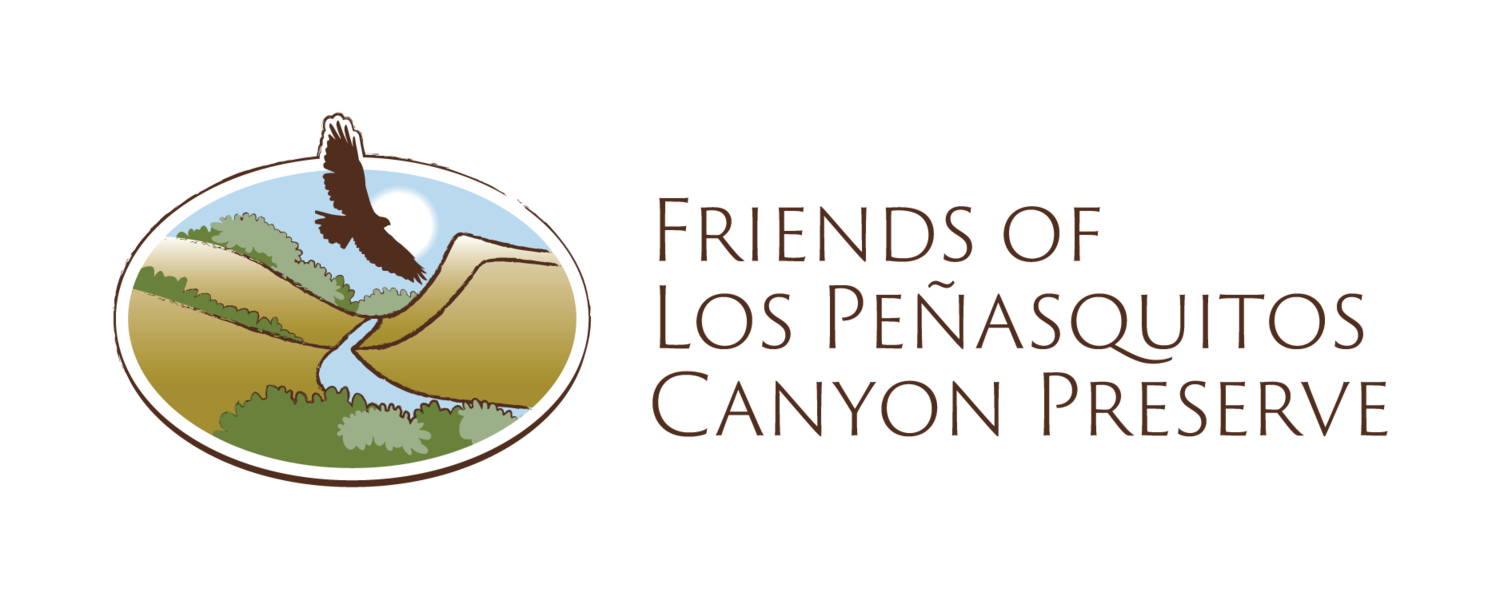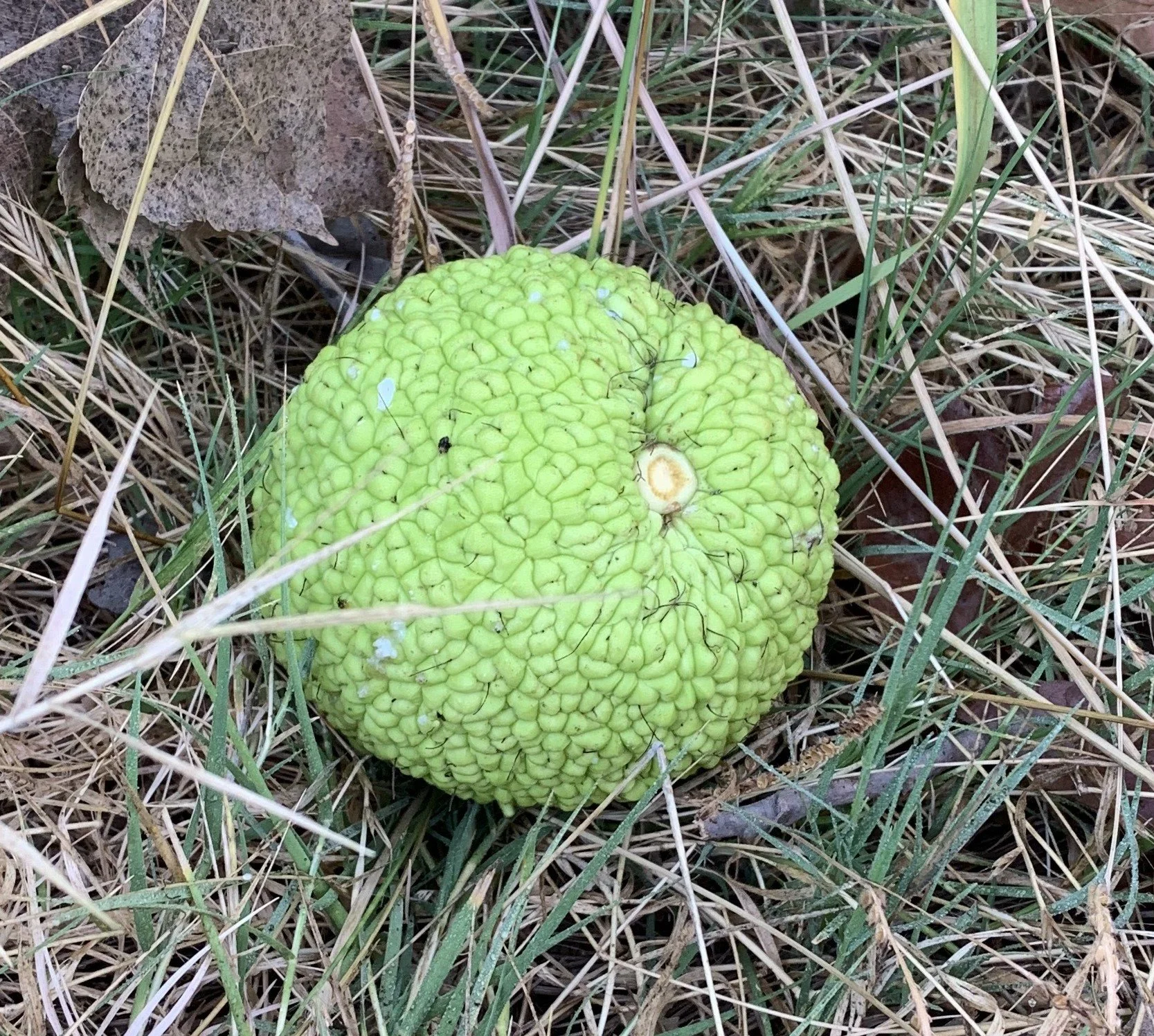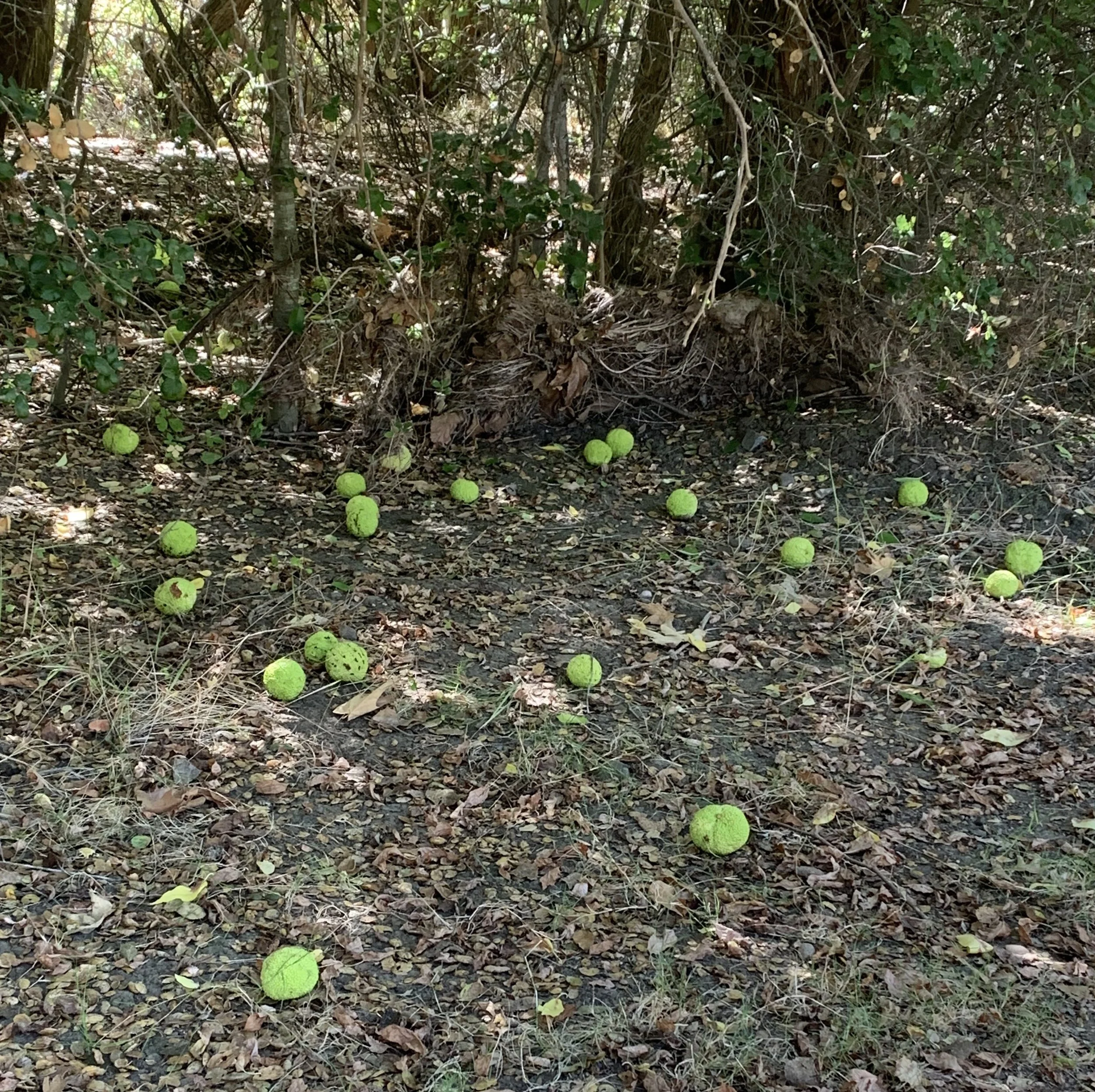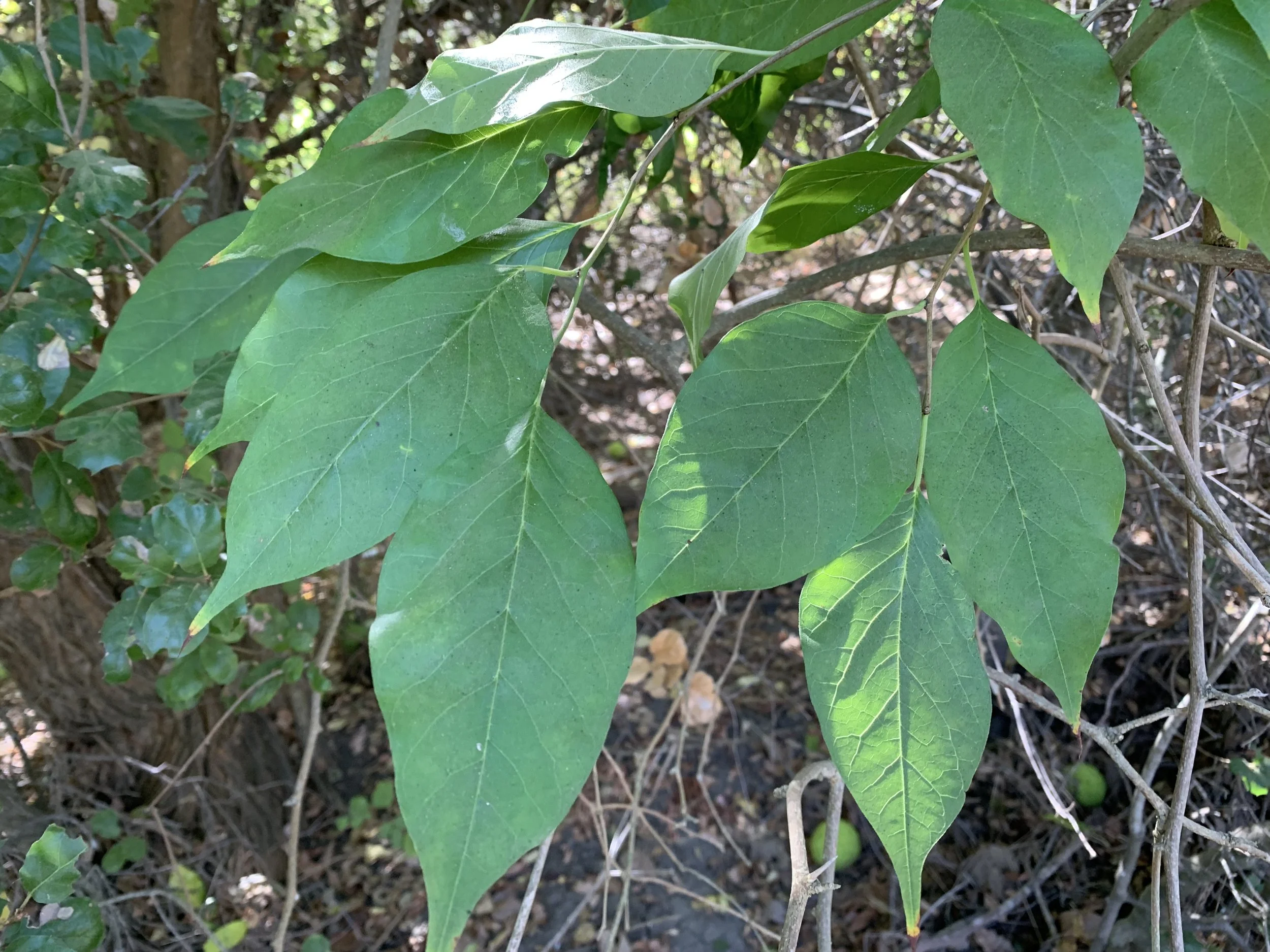Osage Oranges in Peñasquitos Canyon
By Mary Lueking
In the fall of the year if you walk past the old adobe ranch house and proceed on the trail to the west along Peñasquitos creek, you will no doubt run across a few strange looking balls! The balls are roughly spherical, bumpy, 3–6 inches in diameter, turn bright yellow-green in the fall, and fall to the ground.
These distinctive fruits come from the Osage Orange, Maclura pomifera, which is a small deciduous tree, native to the south-central United States. It is not native to southern California so was probably brought here by early settlers. It typically grows about 30–50 ft tall. Despite the name “Osage orange”, it is not related to the orange. It is a member of the mulberry family, Moraceae.
Maclura pomifera has many common names, including Osage orange, mock orange, hedge apple, hedge ball, monkey ball, pap, monkey brains, yellow-wood, and bow wood.
American settlers used the Osage orange (i.e. “hedge apple”) as a hedge to exclude free-range livestock from vegetable gardens and corn fields. Under severe pruning, the hedge apple sprouted abundant adventitious shoots from its base. As these shoots grew, they became interwoven and formed a dense, thorny barrier hedge.
The thorny Osage orange tree was widely utilized throughout the United States until around 1874 when barbed wire was invented. The trees were named bois d’arc (“bow-wood”) by early French settlers who observed the wood being used for war clubs and bow-making by the Osage and Comanche tribes of native Americans. They liked the wood because it was strong, flexible and durable, and the tree was common along river bottoms of the south-central US.
Leaves are arranged alternately along a slender growing shoot 3–4 ft long. The leaves are 3–5 in long and 2–3 in wide, are thick, firm, dark green, shining above, and paler green below when full grown. In autumn they turn bright yellow. The leaf axils contain spines which when mature are about 1 in long.
The Osage Orange is a dioecious plant, meaning that female and male flowers are found on different trees. Male flowers are small and pale green. Female flowers are borne in a dense spherical many-flowered head. Although the flowering is dioecious, the female tree when isolated will still bear large fruits, but lacking the seeds. Due to its latex secretions and woody pulp, the fruit is typically not eaten by humans and rarely by foraging animals.






